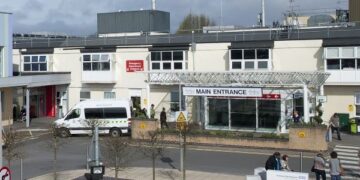PLANS to cap bus fares at £2 per journey have been welcomed by Reading Buses, although the firm wants more details.
On Saturday, the then transport minister Grant Shapps announced that between January and March next year, all single bus journeys will benefit from this £60 million scheme. The government estimates this will save around 30% on the average fare of £2.80.
Reading Buses’ standard fare is still cheaper despite price increases this week.
On Monday, Reading Buses raised its single journey fares by 10p or 20p, with the flat rate single fare being £2.30 on the bus, or £2.20 for people using the company’s app. A day ticket, offering unlimited travel on simplyReading zone journeys, has risen to £4.50 on the bus or £4.30 on the app.
Discounted Lower Caversham, short-hop and South Reading fares will be available for £1.20, £1.50 and £2 on the bus.
But some fares are more expensive. The new 600 route serving Spencers Wood and Riseley is £3.50 to Reading, or £5.80 return, while simplyReading and Wokingham day tickets are £6.40. The all network ticket, which includes buses to Heathrow, is £8.
The simplyReading 7 day, easysaver10 and daysaver5 will increase by £1.
Announcing the news last month, the firm said that passenger numbers had not recovered to pre-covid lockdown levels, and the government funding they had been receiving had ended.
But the government’s plans mean that Reading Buses could be forced to reduce the increases on single journeys, while leaving return and day ticket prices the same.
Transport Secretary Grant Shapps said: “Buses are by far and away the most used form of public transport, so ensuring that almost all bus journeys are no more than £2 will assist passengers over the winter months and provide direct help to thousands of households across the country.
“We know people will be feeling the pressure of rising costs this winter, and so we have been working hard this summer to provide practical concrete help that will lower daily expenditure.”
He added that a pilot scheme in Cornwall saw bus use increase by 10%.
Reading Buses chief executive officer Robert Williams said the plan was a “eye-catching initiative” that would help attract new passengers, at a time when customers and bus companies are facing cost of living and business cost challenges.
But he also wanted more details on how the plan would operate.
“We look forward to understanding in detail how the proposed fare cap will work in practice to ensure it supports the long-term sustainability of bus networks, which are vital in connecting communities with jobs, education and skills, as well as friends, family, and essential public services,” he said.
“Fares are just one tool that can make buses more attractive. We also need a focus on priority measures which will keep buses out of congestion, speed up journey times, help keep fares low, and ensure buses are reliable, factors which we know are important for passengers.”




















































